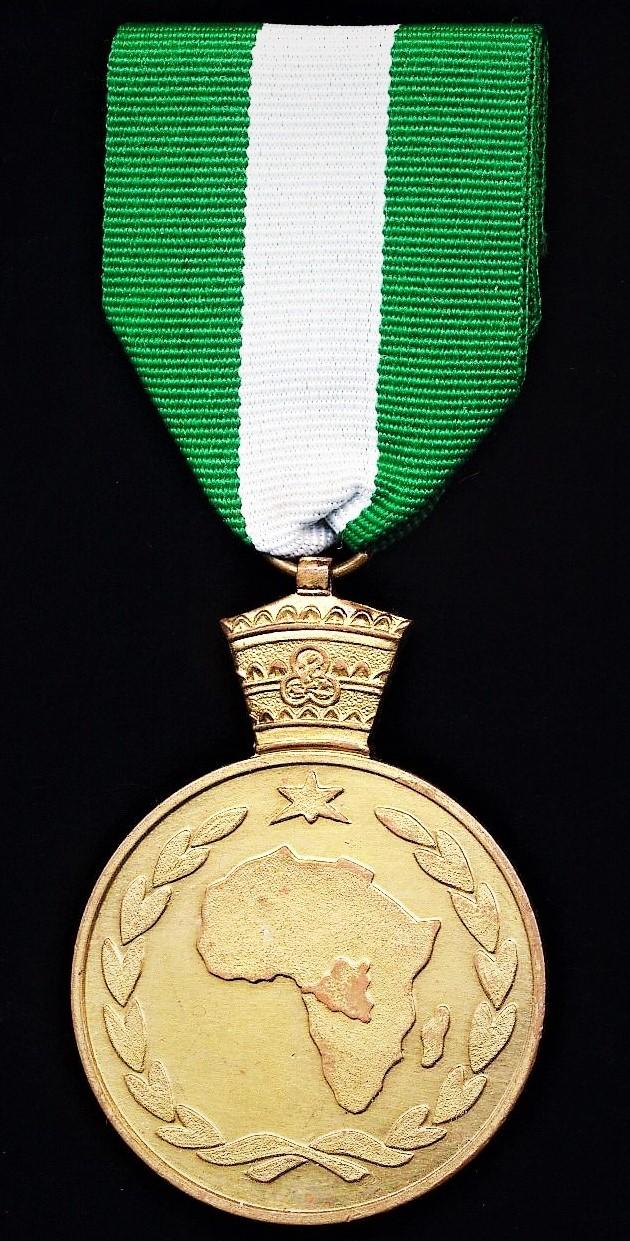Ethiopia (Empire): Commemorative service medal for service with United Nations Operation in the Congo (UNAC) 1960-64. Bronze gilt
Awarded to the Ethiopian service personnel who served with the Ethiopian Contingent of the United Nations Operation in the Congo (UNAC)
The United Nations Operation in the Congo (French: Opération des Nations Unies au Congo, abbreviated to ONUC) was a United Nations peacekeeping force deployed in the Republic of the Congo in 1960 in response to the Congo Crisis. ONUC was the UN's first peacekeeping mission with significant military capabilities, and remains one of the largest UN operations in both scale and operational scope
At its peak, UN forces numbered nearly 20,000 military personnel from over two dozen countries, led largely by India, Ireland, and Sweden. During the peak of hostilities between September 1961 and December 1962, ONUC transitioned from a peacekeeping to a military force, engaging in several clashes and offensives against secessionist and mercenary forces. Following the reintegration of Katanga in February 1963, ONUC was gradually phased out, and civilian aid increased, becoming the single largest assistance effort by the UN up to that time. UN personnel were withdrawn entirely on 30 June 1964
Ethiopian Contingent: Four hundred and sixty Ethiopian troops were among 3,500 UN soldiers to arrive by 20 July 1960. This initial contingent would form the Tekil (or "Tekel") Brigade, which was stationed in Stanleyville. Through the course of the operation, some 3,000 members of the elite Kebur Zabagna (imperial bodyguards)—about 10 percent of the Ethiopian Army's strength at that time—were raised by Emperor Haile Selassie, along with an air force squadron.The Ethiopian 3rd Brigade was distinguished for having provided decisive artillery support in the UN's siege of Kibushi in late 1962/early 1963
Condition: GVF
Code: 22446
40.00 GBP






